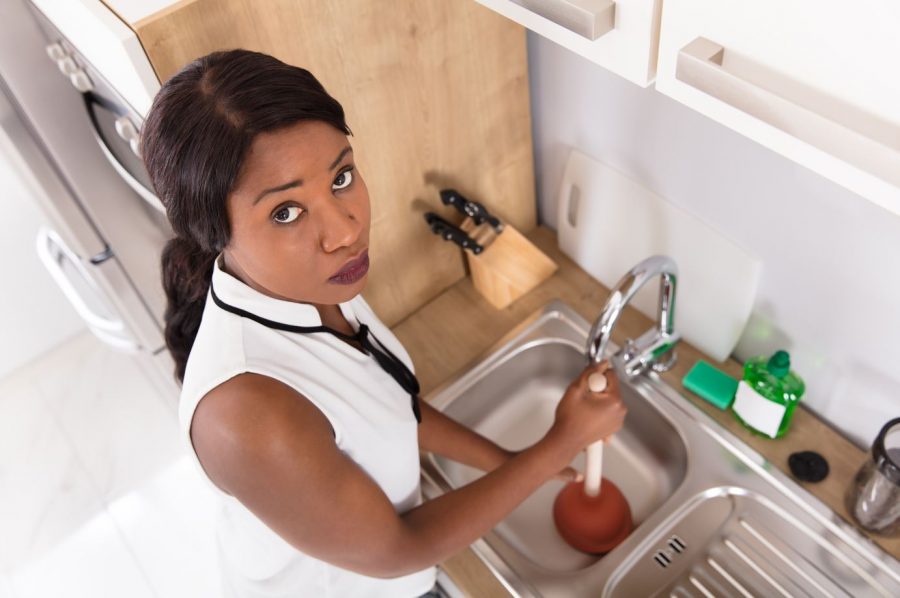As a homeowner, you know plumbing issues will eventually occur. Have you ever had to deal with a burst pipe in your home? Do you wonder how you’d deal with something like an extremely clogged toilet if the situation arose? No matter how careful you are in your home and how carefully you care for your belongings, it’s inevitable that something will break down at some point. Part of being a homeowner is knowing how to deal with these situations as they pop up. This helps keep tiny inconveniences from spiraling completely out of control.
You may need to rely on plumbers to fix these issues if you do not know much about plumbing. Plumbing problems are not uncommon in older homes as drains become clogged with dirt and debris with time. Clogged pipes can lead to major plumbing repairs. Here are five other plumbing issues you may encounter in an older home, and to prepare for these eventualities, here are some things that you should be doing.
Outdated Fixtures
You may think older fixtures are better than their modern counterparts, yet all fixtures will erode and break down with time. Years of use put a lot of wear and tear on these fixtures that causes them to be less resistant to corrosion. You should consider installing new fixtures before your old faucets, valves, spigots, and handles cause damage.
Galvanized Pipe Corrosion
Galvanized pipe corrosion is a dangerous plumbing issue that often occurs in older homes. Older pipes were made with iron and covered in zinc to make them resistant to corrosion. These pipes eventually develop tiny cracks that allow contaminants to enter and damage the interior of these pipes. A professional cleaning may solve the problem in some cases. In most cases, galvanized pipe corrosion is a problem that requires you to consult with plumbers to see if you need a new piping system as it is a tough issue to diagnose on your own.
Tree Root Intrusion
Tree roots cause a lot of damage to pipes. After many years, tree roots can saturate the soil and attach themselves to your aging pipes. Tree roots will grow into a crack or other opening in your pipes, causing problems such as backed-up sewer lines, leaking drains, clogged drains, and other damage. When this happens, you will need professionals to come out and verify this problem and replace your pipes. They can use cameras to spot the problem and confirm if the cause is coming from your trees before you have to resort to tree removal.
Drain Issues
Leaking drains are not unique to older homes, but older homes experience this problem more often than newer homes. Older drains can develop a bad odor, so it is important to inspect your drains when you notice an odor. You can clean your drains, but it is best to have your drains cleaned by a professional. Smells to watch out for might smell like rotten eggs or a sulphuric scent. This is a sure sign of a clog creating a breeding ground for bacteria.
Shifting Pipes
Homes will shift and sink over the year. You will not notice it, but this movement will affect the pipes underneath your home. This movement will restrict the flow of water through the pipes and cause clogs and stoppages. In some cases, you might notice cracks in the foundation of your home. While this is a problem itself to worry about, don’t forget that behind those walls, you also have pipes that might be affected.
Have a plumber inspect your pipes, drains, and fixtures if you live in an older home. It is better to fix minor plumbing problems now than to deal with bigger plumbing problems later. So, what can you do to prevent plumbing emergencies or inconveniences?
Find a Plumber
Not every professional plumber will be able to handle every single plumbing situation. They might not have the right tools or equipment for the job. If you have an issue with your sprinkler system, you’re going to want to call a plumber who installs and repairs sprinkler systems. Conversely, a plumber who focuses on sprinkler and irrigation systems may not be able to fix your clogged drains. Depending on your home and the plumbers in your area, you may need contact information for three or more different varieties of plumbers.
Practice Turning off the Water
It’s all too common for there to be a plumbing issue where the water simply will not stop running. It may be from a burst pipe or an overflowing toilet, but it happens. It’s nearly as common for homeowners to be at a loss as to how to turn off the water while they wait for the plumber to arrive. Every few months, you should test your plumbing situation to make sure that all of the shut-off valves actually work as they should. If any of them are rusted or corroded open, getting them fixed ASAP will save you both time and money in the long run.
Get Cleanup Supplies
Modern cleaning supplies are amazing. You can “sweep” up things quickly with a vacuum and no longer must you lug heavy buckets around to mop the floor. The downside is that these modern methods aren’t always great at cleaning up large volumes of water. It’s good if you have a wet/dry vacuum to deal with plumbing situations, but you can’t always trust that the electricity will be working or available. Even if you don’t use them regularly, make sure that you have an old fashioned mop and bucket in the home as well as old towels that you don’t need anymore.
If you have an older home, plumbing issues are an inevitable reality. Make sure you know what issues are likely to pop up in your home, and prepare for them accordingly. This could mean anything from taking care of old trees with troublesome root structures to making sure you know where your home’s water shutoff valve is located.

